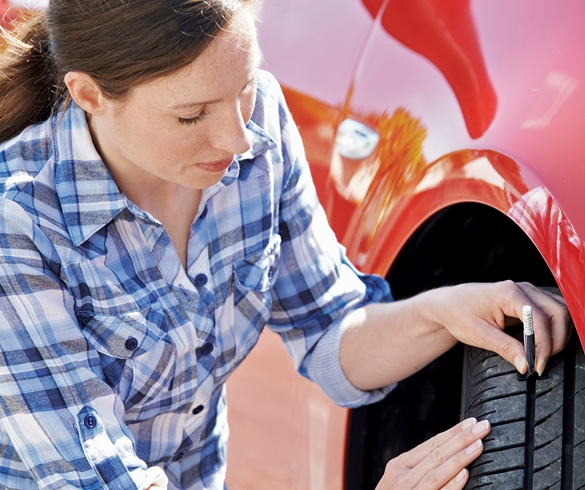
4 Tips for Summer Tire Safety
As temperatures start to rise, checking your tires’ air pressure can help protect them from the heat when hitting the road this summer. Whether you’re trekking cross-country or simply to and from work, the more heat your tires are exposed to could mean potential trouble on the road.
The friction from your tires rolling, turning and braking combined with higher pavement temperatures and worn tires can lead to tire blowouts. Knowing the condition of your tires can help keep your vehicle well-maintained as well as you and your family safe on the road. When it comes to tire safety, it pays to know your numbers.
“Customer safety is our No. 1 priority,” said Mark Marrufo, vice president of brand marketing at Discount Tire. “Drivers should know how to maintain their tires and when to replace them when worn to ensure they don’t compromise safety when driving in summer temperatures.”
To help stay safe on the road this summer, know your numbers and follow these easy T.I.R.E. tips: tread depth, inflation pressure, rotation, education.
- Don’t forget to check your tire’s tread before hitting the road. Tread depth refers to the amount of tread on a tire, which can impact handling, traction and stopping distance, especially on wet roads. Most new car tires start with 11/32 inches of tread. If your tires don’t have at least 2/32 inches, it’s time to replace them. Use the “penny test” by sticking a penny upside-down in a tread groove. If Lincoln’s entire head is visible, your tread is worn beyond the legal minimum requirement and it’s time to replace your tires.
- Check your tire inflation pressure at least once a month to make sure they are at the appropriate inflation pressure. Low tire pressure leads to decreased steering and braking control, poor gas mileage, excessive tire wear and the possibility of tire failure. Temperature changes affect tire pressure. For every 10 degrees of temperature change, tire air pressure changes 1 PSI (pound per square inch).
- To increase tread life and smooth out your ride, rotate your tires every 6,000 miles or earlier if irregular or uneven wear develops.
- Stay educated on your tires and what you need to do to keep them safe. Inspect your spare and consider a roadside assistance plan. Some cars come with run-flat tires, which enable continued driving with no air pressure for up to 60 miles at speeds up to 55 mph, but most vehicles are equipped with either a space-saver spare or tire repair kit. Check your trunk to see what your vehicle contains. Drivers unsure of the condition of their tires should consult an expert, and visiting a Discount Tire location for a free safety inspection is a good place to start.
To locate a store near you, schedule tire service appointments or search tires and wheels by size, brand and style, or by vehicle year, make and model, visit discounttire.com.
Source:
Discount Tire









